Despite the difficult economic situation, 2024 was a good year for the IP right “designs”. Compared to the previous year, the number of design applications filed with the DPMA in 2024 considerably increased by 4.7% (2023: 3,775; 2024: 3,951). This is a positive development after the constant decline in the past years. It remains to be seen whether this development will continue in the next years.
Applicants once again made extensive use of the option to combine designs in a multiple application. It is possible to combine up to a total of 100 designs in multiple applications filed via the DPMAdirektPro software or on paper. The web-based filing platform DPMAdirektWeb allows multiple applications comprising up to 20 designs to be filed. In 2024, far more than half of the applicants (68.6%) took advantage of this service.
In 2024, on average, 10.6 designs were filed in a multiple application (2023: 10.7 designs); in total, 28,723 designs (2023: 28,110) were filed in multiple applications.
Last year, we conclusively processed requests for entry in the register for a total of 30,675 designs. Compared to the previous years, the Design Unit was once again able to significantly reduce the duration of design registration procedures. The number of designs entered in the design register was 28,024; this means that the percentage of positive completions was 91.4% (2023: 90.8%).
At the end of 2024, 238,193 designs were registered at the DPMA, i.e. 4.3% fewer than in the previous year.
With a share of 92.7%, the majority of designs registered with us again came from Germany last year, i.e. from owners based in Germany. A total of 1,376 registered designs came from other European countries (2023: 1,230), 681 from non-European countries (2023: 377). The majority of designs registered from abroad in 2024 again came from Switzerland with 653 registered designs. With 303 registered designs and an enormous increase of 283.5% compared to the previous year, China improved its position from seventh to third place.
| countries of origin | Registered designs | Percentage |
|---|---|---|
| Germany | 25,967 | 92.7 |
| Switzerland | 653 | 2.3 |
| China | 303 | 1.1 |
| Austria | 277 | 1.0 |
| Czech Republic | 234 | 0.8 |
| USA | 206 | 0.7 |
| Hungary | 104 | 0.4 |
| Hongkong | 77 | 0.3 |
| Taiwan | 43 | 0.2 |
| Poland | 41 | 0.1 |
| Others | 119 | 0.4 |
| Total | 28,024 | 100 |
With 28.3%, most of the 25,967 domestic designs registered in 2024 came from North Rhine-Westphalia (7,349 registered designs). This means that North Rhine-Westphalia has now been at the top of the list of German Länder for more than 15 years. In 2024, it was followed by Bavaria with 4,681 registered designs (18%), just ahead of Baden-Württemberg with 4,609 registered designs (17.7%).
The map shows the registered designs in 2024 and the registered designs per 100,000 population as well as the percentage change, broken down by German Land (residence or principal place of business of the holder).
In 2024, most designs (4,415, i.e. 13.3%) were registered in class 2 (articles of clothing and haberdashery). Class 6 (furnishing) was second with 13.2% (4,394 designs), followed by class 32 (graphic symbols and logos, surface patterns, ornamentation, arrangement of interiors and exteriors) with 10.9% (3,631 designs).
Top 5 Classes of goods of registered designs1 at the DPMA in 2024
Classes of goods of registered designs1 at the DPMA2 in 2024
1 A design can be attributed to several classes of goods.
A registered design may enjoy protection for a maximum period of 25 years, starting from the date of filing. During that period, the register entry can be changed by various procedures:
- Renewal or cancellation
A term of protection is five years. Renewal fees must be paid at the end of each term to renew protection. Unless renewed, design protection will lapse. An corresponding comment concerning the registered design will then be made in the register. - Extension
When filing a design application, applicants can request that the representations of a registered design will not be published for a period of up to 30 months (deferment of publication of the representation). If a design has initially been registered only for a 30-month period of protection from the filing or priority date, deferring the publication of the representation, the holder of the registered design may pay a fee to extend the period of protection to the first five years after the filing date. In this case, a comment concerning the extension will be made in the design register and the reproductions of the design will be published. - Recording of changes
We will record a change to an IP right in the register if, for example, it is transferred from the owner to another person or if there is a change of representative.
In 2024, 22 applications for determination or declaration of invalidity were filed (2023: 15). The application for determination or declaration of invalidity will be served to the holder of the challenged design after receipt of a fee of 300 euro and examination of further admissibility requirements. If the application is not contested within one month, invalidity will be determined or declared by decision of the Design Division without further substantive examination and the design in question will be cancelled in the design register after the decision has become final. If the application is contested in due time, the Design Division will conduct an official examination of the grounds of invalidity (the appearance of the product does not constitute a design, lack of novelty or individual character; exclusion from design protection; earlier conflicting rights). Subsequently, the Design Division will make a decision in proceedings that — also with regard to the costs to be borne — are essentially based on the Code of Civil Procedure (Zivilprozessordnung). In 2024, a total of 34 design invalidity proceedings were concluded (2023: 21).
In Focus DesignEuropa Awards 2024: Lifetime Achievement Award for Dieter Rams
Tribute to a „design icon“: Dieter Rams received the Lifetime Achievement Award at the DesignEuropa Awards 2024. The jury honoured him as a „pioneer of both design and sustainability“ who „designed more than 200 iconic devices and shaped the look and functionality of consumer products for decades.”
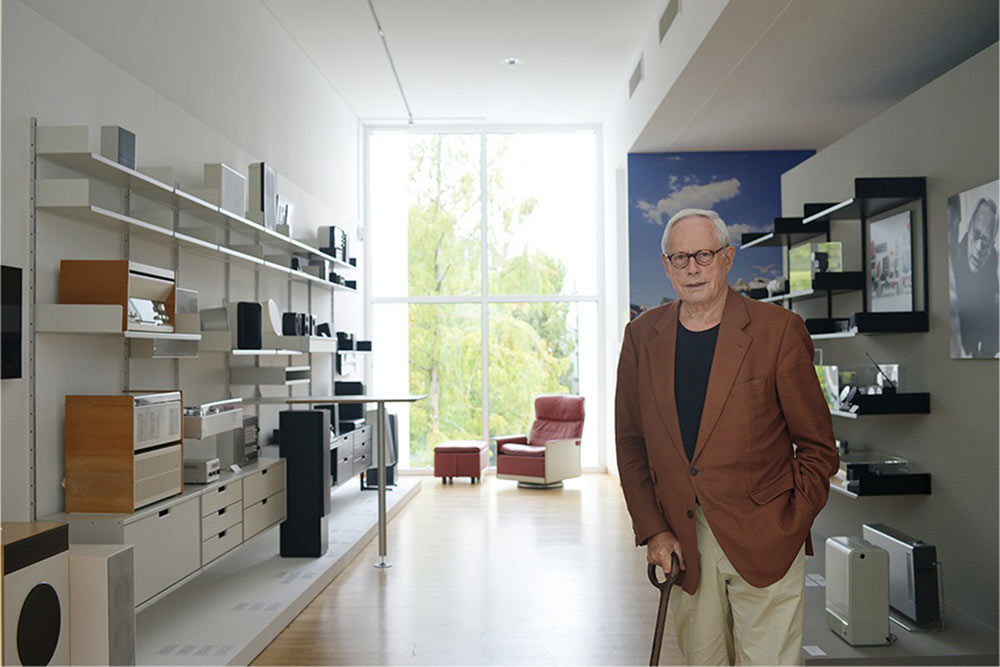
Dieter Rams amidst his works
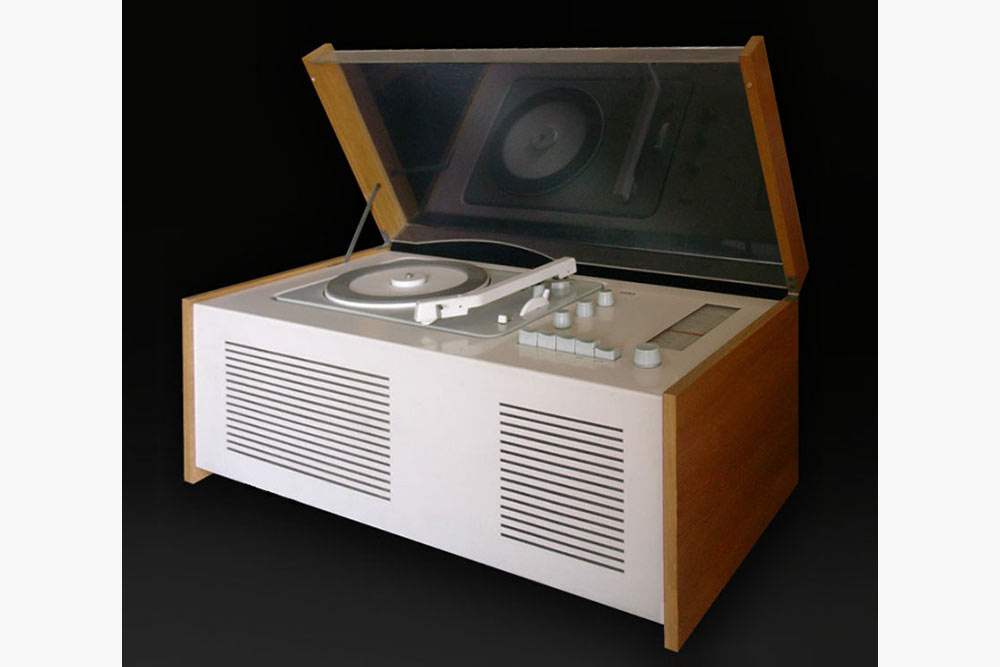
Phonosuper SK 61 from 1962 (further development of the SK4)
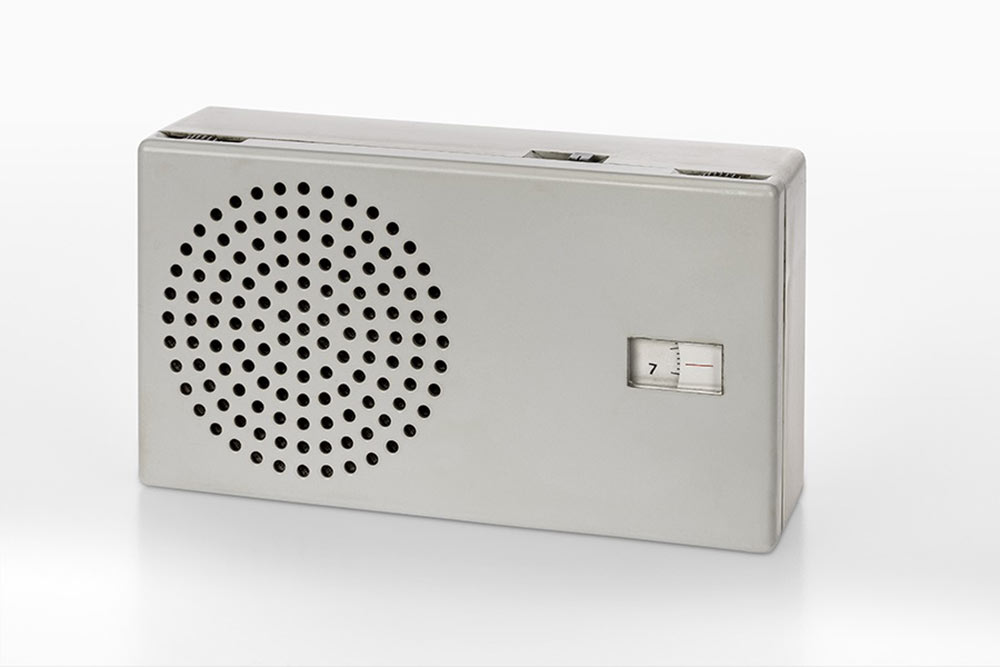
Pocket radio T3
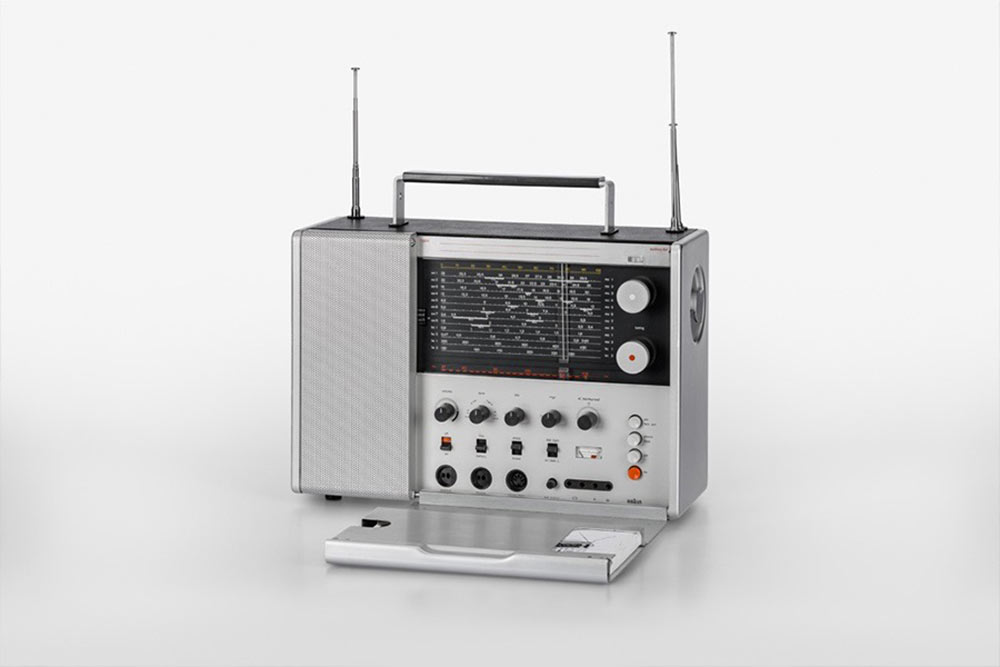
T 1000 world receiver 1963
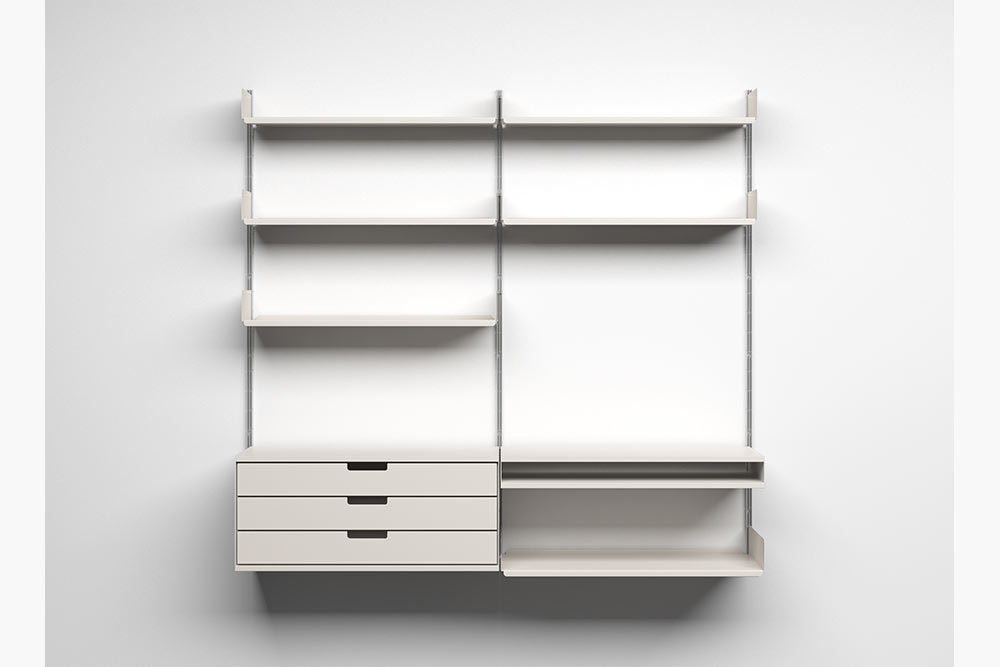
Universal shelving system "606" from Vitsoe
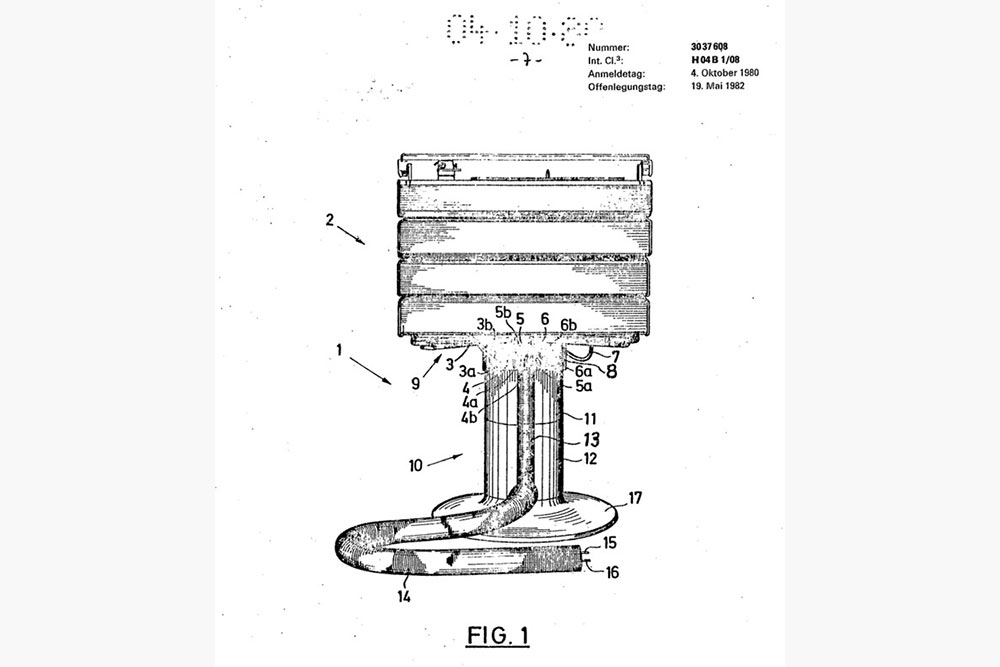
DE3037608A1: Free-standing hifi system
Dieter Rams, born on 20 May 1932 in Wiesbaden, is considered one of the most successful and influential industrial designers of the 20th century — and a pioneer of sustainable thinking: "Rams champions a design ethos that takes into account our finite resources and challenges designers and the public alike to consider the long-term impact of consumer behaviour," the jury's statement reads.
Rams began studying architecture and interior design at the Werkkunstschule Wiesbaden in 1947. After graduating in 1953, he worked for the Frankfurt architecture firm Apel for two years before joining the electrical appliance manufacturer Braun.
At the time, Braun's design department worked closely with the legendarily influential but unfortunately short-lived Ulm School of Design, including Hans Gugelot and Otl Aicher. Ram's talent was quickly recognised. One of his first designs for Braun in 1956 was the SK 4 radio-record player combination (nicknamed "Snow White's Coffin"). The radically minimalist design of a white lacquered sheet metal body with a cover made of acrylic glass and light-coloured wood became a classic.
In 1961, Dieter Rams took over the management of the design department at Braun. He developed a unique product language that combined intuitive operation and outstanding aesthetics. Many products were far ahead of their time with their minimalist and functional design, which revolutionised the household appliance sector.
Under Ram's leadership, many pioneering electrical appliances were created that have long been regarded as design classics, such as the T 1000 world receiver, the LE1 electrostatic loudspeaker, the Regie and Atelier hi-fi components, pocket and desk lighters and the ET 66 pocket calculator.
Ram's second field of activity became furniture design. In his very first year at Braun, the 23-year-old sketched out a proposal for the company's new interior design. This contained the first idea for a rail-based, wall-mounted storage system. In 1958, the "606" shelving system was launched on the market — a system that has often often been copied to this day. Rams is still affiliated with the manufacturer Vitsoe; the "620" armchair programme, which has been produced since 1962, is also well-known.
From 1981 until his retirement in 1997, Dieter Rams taught as Professor of Industrial Design at the Hamburg University of Fine Arts. From 1987 to 1997, he was President of the German Design Council. Dieter Rams has had numerous exhibitions and has been honoured worldwide, for example with an honorary doctorate from the Royal College of Art in London. Several of his designs are part of the collection of the Museum of Modern Art in New York. Rams is co-author of various patent applications (e.g. DE3011843C2, DE3026262A1, DE3037608A1).
Apple is one of the many companies that have been influenced by him. Steve Jobs and former chief designer Jonathan Ive are said to have highly valued Rams' work and philosophy. Conversely, Rams praised: "You can count the companies that really take design seriously on ten fingers. Apple is one of them."
Rams' design follows his own philosophy: he is in favour of an "end to the age of waste" and questions how we can survive on a planet with finite resources "if we just throw everything away". His credo to this day is "Good design is as little design as possible" or "Less, but better".
Further information on the DesignEuropa Awards and the winners can be found on the EUIPO website.

Briefly explained Successful update: European design reform strengthens an important IP right
Can light installations, virtual rooms or NFT objects be protected as registered designs? The new EU Design Directive answers this question with a definite yes. The central aim of the amendment was to adjust European design law to digitisation and open it up to new types of designs. After almost two years of negotiations, the amended version of the previous directives and regulations was published in the Official Journal of the EU on 18 November 2024.

Intense negotiations took place in Brussels over a modern, future-oriented and technologically neutral definition of “design” and “product”. In the new directive, the “Community design” is now referred to as “EU design”, and the broadening of the term “product” explicitly enables the protection of all physical and non-physical products. This includes graphical user interfaces, animated figures and items from the metaverse as well as holograms and NFT (non-fungible token) items, and thus ensures the effective protection of the economic interests of the creators of digital designs too.
Protection for digital designs
New types of designs and the technological progress require modern ways to register designs. By introducing dynamic and animated types and formats of reproduction for the visual representation of designs, the EU aims to establish modern filing options at the IP offices and make access to design protection easier. Basic common rules for the requirements for the representation of designs are to make the procedures simple, efficient and legally secure throughout Europe. In addition to the harmonisation of the national registration procedures, the directive, for the first time, provides for extensive procedural alignments concerning the deferment of publication of the representation and the extension and maintenance of the protection of registered designs. Furthermore, certain basic procedural provisions on official invalidity proceedings, which the member states are free to provide, have been harmonised.
Other changes
The amendment focuses not only on official procedures but also on the rights of design holders:
- New registration symbol
Design holders can now use the ( ) symbol, the new registration symbol for national designs and EU designs, to display a uniform design notice on their products and indicate that a product enjoys design protection.
) symbol, the new registration symbol for national designs and EU designs, to display a uniform design notice on their products and indicate that a product enjoys design protection. - Provision on 3D printing technologies
When 3D printing technologies emerged, it became clear that the current design law did not provide sufficient protection. In the past, it was possible to send consumers files that enabled them to create private copies of protected designs using a 3D printer. As such copying was not based on the actual form of the product, the design was not deemed infringed according to the law. Accordingly, design holders were not able to take action against the person who had sent the file. To change this, the legislator introduced new rules. Now, the holder of a design can prevent other persons from creating, downloading, copying or sharing any medium or software used to counterfeit a protected design. - Transit provision
Rightholders can prevent the movement of products infringing design rights through the EU. This also applies where these products are not intended to be sold within the EU. - Repair clause
The repair clause allows producers of spare parts to use protected designs, so they can produce and market what is referred to as must-match spare parts, i.e. spare parts that are identical to the original part. However, this only applies under certain conditions. The purpose of the new provision is to harmonise limitations in the spare parts market at the EU and national level. The repair clause introduced in Germany in 2022 already essentially corresponds to the new EU provisions.
Another central aim was to strengthen the coexistence of the national and European design systems. In particular, it was important to strike a proper balance with regard to fee structures. For this purpose, the fees for the extension of the protection of an EU design have been increased significantly to establish a sufficient difference from the national IP systems of the member states and take into account the different territorial scope of protection.
The member states must now implement the amendments provided for in the directive into national law by 9 December 2027. Some of the new provisions of the regulation concerning the Europe-wide protection through the EU design apply from 1 May 2025, other amendments will only apply from 1 July 2026.
Further information on design protection is available on our website.